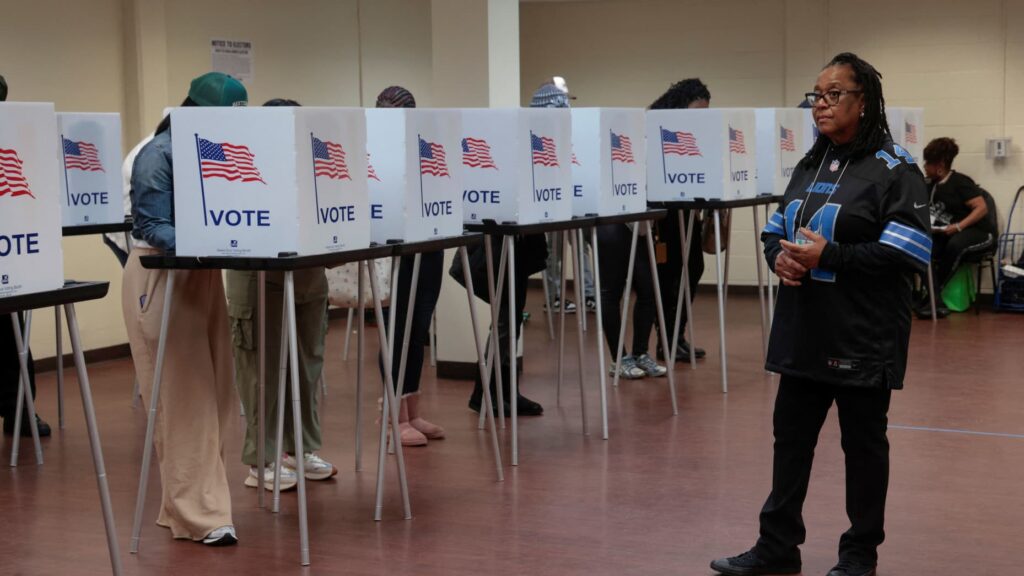Voting is one of the most important civic duties we have. Whether it’s for national elections or local propositions, casting your ballot is how you make your voice heard. But there’s one question that pops up every time election season comes around: Where can I vote? Finding your voting location can sometimes feel like a hassle, but with today’s technology, it’s easier than ever. Let’s dive into how you can find the closest voting location to you and make sure you’re all set to participate in your next election!

Why It’s Important to Know Your Voting Location
Before we dive into how to find your voting location, let’s talk about why this is important. Imagine gearing up for Election Day, excited to cast your vote, only to arrive at the wrong location. Frustrating, right? Worse still, if you don’t know where to go, you might not vote at all! Knowing your designated polling station ensures that you avoid these mishaps and fulfill your civic responsibility smoothly.
What Is a Polling Station?
In simple terms, a polling station is a place where voters go to cast their votes during an election. These locations are typically set up in schools, community centers, libraries, or other public buildings. Each voter is assigned a specific polling place based on their registered address.
Why You Can’t Just Vote Anywhere
Some people might wonder, “Why can’t I vote at any polling station?” Good question! Voting locations are set up to serve a specific geographic area. This ensures that you are voting for the correct local representatives, measures, and propositions that apply to your address. Going to the wrong station might mean you’re not on the right list of registered voters, and your vote could be delayed or disqualified.
How to Find Your Voting Location
Now that we understand the importance of knowing your polling station, let’s dive into how you can actually find it. There are several methods available that can make this process quick and painless.
1. Use Your State’s Election Website
Every state has an election website where you can easily look up your voting location. Most of these sites have a section where you can enter your address, and it will tell you where you need to go to vote. Here’s how you can do it:
- Step 1: Visit your state’s election website (you can find the URL by searching “[your state] voting information”).
- Step 2: Look for a tool that says “Find Your Polling Place” or “Where to Vote.”
- Step 3: Enter your address, and voila! Your polling location will pop up with all the relevant details.
2. Check Your Voter Registration Card
When you registered to vote, you probably received a voter registration card in the mail. If you still have it, your polling location might be printed right there. Keep this card handy—it also often includes your voting district information, which can be helpful during elections.
3. Use Google to Search “Voting Locations Near Me”
Did you know you can simply type “voting locations near me” into Google, and it will provide options based on your location? Google partners with election officials to make finding your polling station as easy as a quick search.
- Pro Tip: Make sure your device location is turned on so that Google can give you the most accurate polling locations.
4. Try the Voting Information Tool from Nonprofit Organizations
Nonprofit organizations like Vote.org and Rock the Vote provide excellent tools to find your polling place. These are reliable resources that work nationwide, and all you need to do is input your address.
5. Call Your Local Election Office
If you prefer speaking to someone directly, you can always call your local election office. They can confirm your polling location and answer any questions you have about what to bring or what to expect on Election Day.
6. Check Your Mail for Election Notices
Weeks before an election, you’ll likely receive election notices in the mail. These are usually sent by your local election office and include essential details about your polling location, voting hours, and what you need to bring. Don’t toss these out; they’re your official guide to voting day.

What to Do If Your Voting Location Changes
Sometimes, your regular polling location might change. Maybe your usual spot is under construction, or they’ve consolidated polling stations for that election. So, what do you do?
Stay Updated with Election Officials
The best way to stay informed is by checking in with your local election office or their website, especially as Election Day approaches. If there’s been a change, they will typically send out notifications through mail, email, or public announcements.
Use Early Voting or Vote by Mail
If the change in location complicates things for you or if you’re worried about long lines, another option is to vote early or by mail. Many states offer early voting days leading up to the election. Alternatively, voting by mail ensures you can cast your ballot from the comfort of your home.
What Should You Bring to the Polling Station?
Now that you’ve found your voting location, you want to make sure you’re prepared for the big day. One of the most common reasons people are turned away from polling stations is that they don’t have the proper identification.
Types of Identification You Might Need
Each state has different rules for what kind of ID you need to vote. Here are some commonly accepted forms:
- Driver’s license or state ID card
- Passport
- Military ID
- Voter identification card
- Utility bill or bank statement with your address (in some states)
Make sure to check your state’s ID requirements well before Election Day to avoid any surprises.
What to Expect on Election Day
When Election Day arrives, here’s what you can expect at your polling station:
- Lines – Depending on the time of day, there might be long lines, so be prepared to wait.
- Check-In Process – You’ll need to check in with election officials and present your ID or voter registration card.
- Voting Machines – After you’re checked in, you’ll be guided to a voting machine or given a paper ballot to cast your vote.
How Long Does It Take to Vote?
This depends on the time of day and how busy your polling station is. Early morning and late evening are usually the busiest times. If you want to avoid the crowd, try to go mid-morning or early afternoon.
Can You Still Vote If You’re in Line After Closing Time?
Yes! As long as you’re in line by the time the polls close, you are allowed to vote. Election officials will ensure that everyone in line at closing time gets their chance to cast a ballot.
How to Check If You’re Registered to Vote
It’s always a good idea to double-check your voter registration status before heading to the polls. You can do this by visiting your state’s election website or using national tools like Vote.org to confirm your registration.
Voting by Mail: A Convenient Alternative
If getting to your polling station seems like a challenge, you might want to consider voting by mail. Many states offer this option, and in some places, it’s the primary way people vote. Here’s how it works:
- Request a Mail-in Ballot – You can request a mail-in ballot online or by contacting your local election office.
- Fill Out Your Ballot – Once you receive your ballot, fill it out carefully, following all the instructions.
- Mail It Back – Make sure to send your ballot well before Election Day to ensure it arrives on time.

Conclusion
Knowing where to vote is one of the easiest ways to ensure that your voice is heard during an election. Whether you’re using your state’s election website, Google, or calling your local election office, finding your voting location is easier than ever. Don’t let the process of finding your polling station deter you from exercising your right to vote. Take the time to find your location ahead of time, prepare for the day, and get out there to cast your ballot!
FAQs
1. How can I find my voting location online?
You can use your state’s election website, Google search, or nonprofit tools like Vote.org to find your voting location. All you need is your registered address.
2. Can I vote at any polling station?
No, you must vote at your assigned polling location. This ensures you’re voting on the correct local candidates and propositions.
3. What should I bring to my polling station?
You may need to bring a government-issued ID like a driver’s license, passport, or voter registration card. Some states also accept utility bills or bank statements.
4. How can I vote if I can’t make it to the polling station?
You can vote early or request a mail-in ballot. Many states allow you to vote by mail if you can’t make it to your designated polling station.
5. What happens if I go to the wrong polling station?
If you go to the wrong polling station, election officials may direct you to your correct location. If you’re not on the voter list for that location, your vote could be delayed or invalidated.